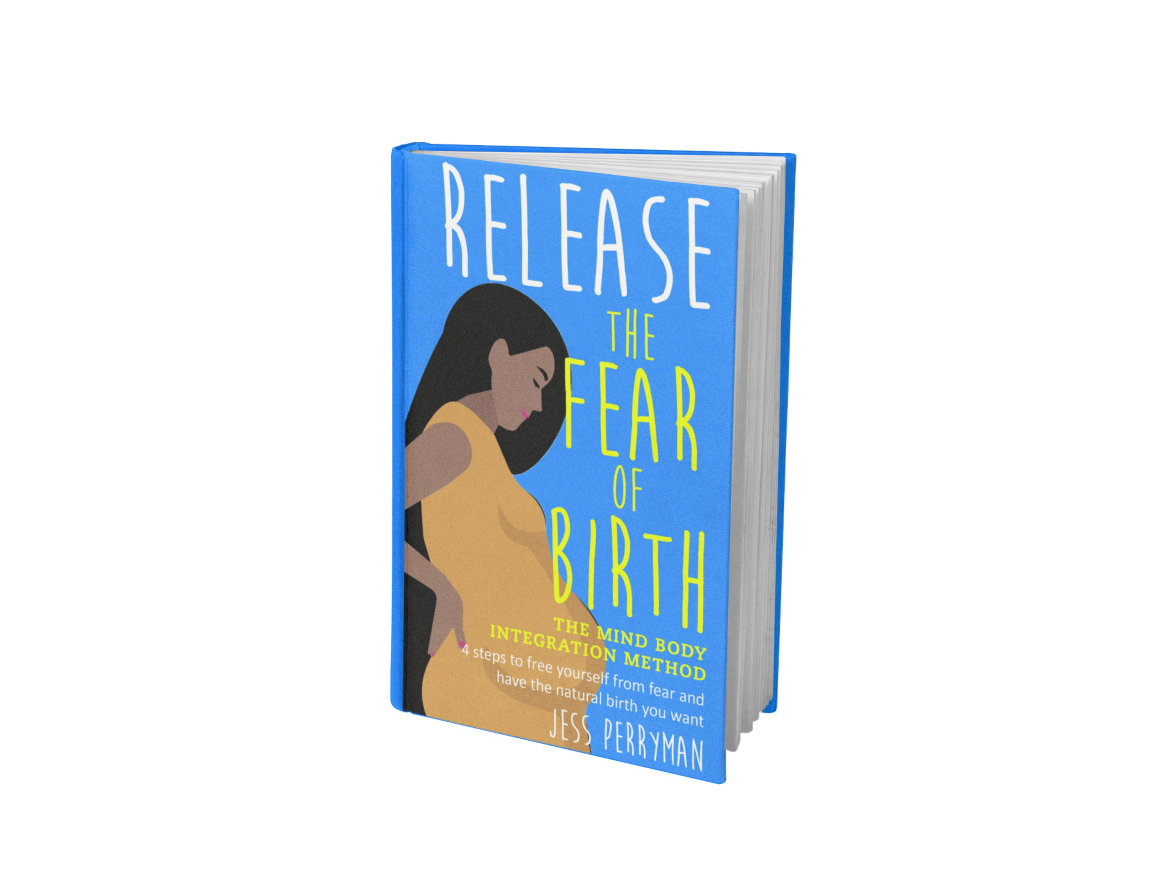2. Breathe To Interrupt The Cycle
The breath is the fastest way to influence the nervous system. By using a breath with an extended exhale (try 4 seconds in and 8 seconds out), you are intentionally stimulating the parasympathetic branch of your nervous system, the calm and connected side. Try to maintain this breath for as long as possible to fully harness the wisdom of your body.

3. Interject With Self-Compassion Or Positive Affirmations
Next, work with your mind to change the internal narrative of fear to one of safety. Self-compassion can sound like, ‘I am doing great,’ ‘This is hard but I am strong,’ and ‘I am a powerful birthing woman’. And some great affirmations include, ‘Let go’, ‘My baby and I are safe,’ or ‘I was made for this’. Choose one or write your own to find emotional resonance with your words. The more connected you feel to these mantras, the more powerfully they will work for you.

4. Release Any Tension You Are Holding In Your Body
Now take your attention back to your body to release any residual tension you may be holding. Pay particular attention to your brow, jaw, hands, pelvic floor and thighs. This help to reduce your experience of pain.
The beauty of The Mind Body Integration Method is that it can be used anywhere, anytime in the lead up to birth. Any time you notice stress entering your body, begin the process. The more opportunities you have to use it before birth, the better it will work for you on the day.
You deserve to be able to tell a new story, one where you enter motherhood empowered instead of exhausted. Don’t let your fear decide your fate.
You can learn more about the above method and how to identify and let go of your own fears leading up to birth in the author’s new book ‘Release The Fear Of Birth: The Mind Body Integration Method’, available now at www.amazon.com.

References:
Mozingo JN. Pain in labor: a conceptual model for intervention. JOGN Nurs. 1978 Jul-Aug;7(4):47-9. doi: 10.1111/j.1552-6909.1978.tb00925.x. PMID: 249349.
Buckley S. (2015) Hormonal physiology of childbearing: Evidence and implications for women, babies, and maternity care. Washington, D.C.: Childbirth Connection Programs, National Partnership for Women and Families. Accessed on 01/10/21 https://www.nationalpartnership.org/our-work/resources/health-care/maternity/hormonal-physiology-of-childbearing.pdf
Jessica Perryman is the founder of Temple Wellness and Yoga. Visit her website to find out more, and join her supportive communities on Facebook and Instagram.










